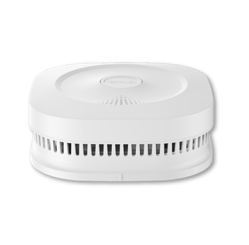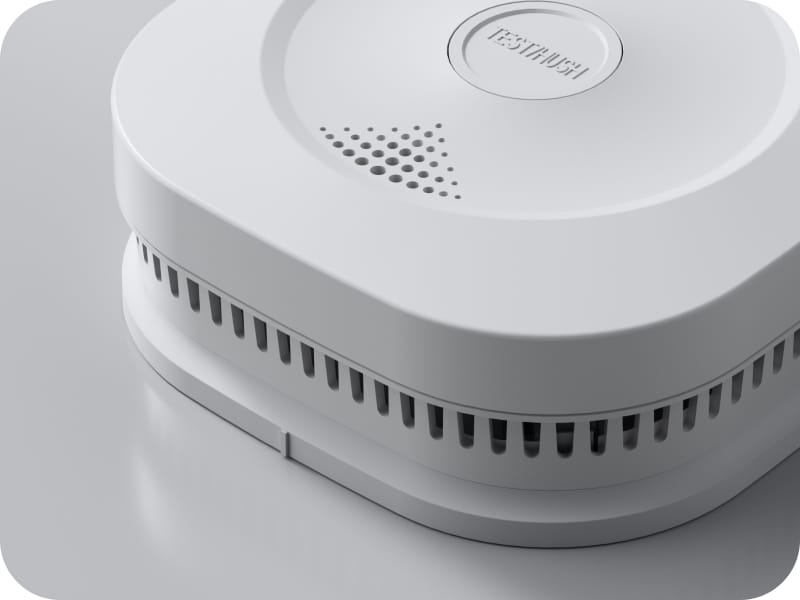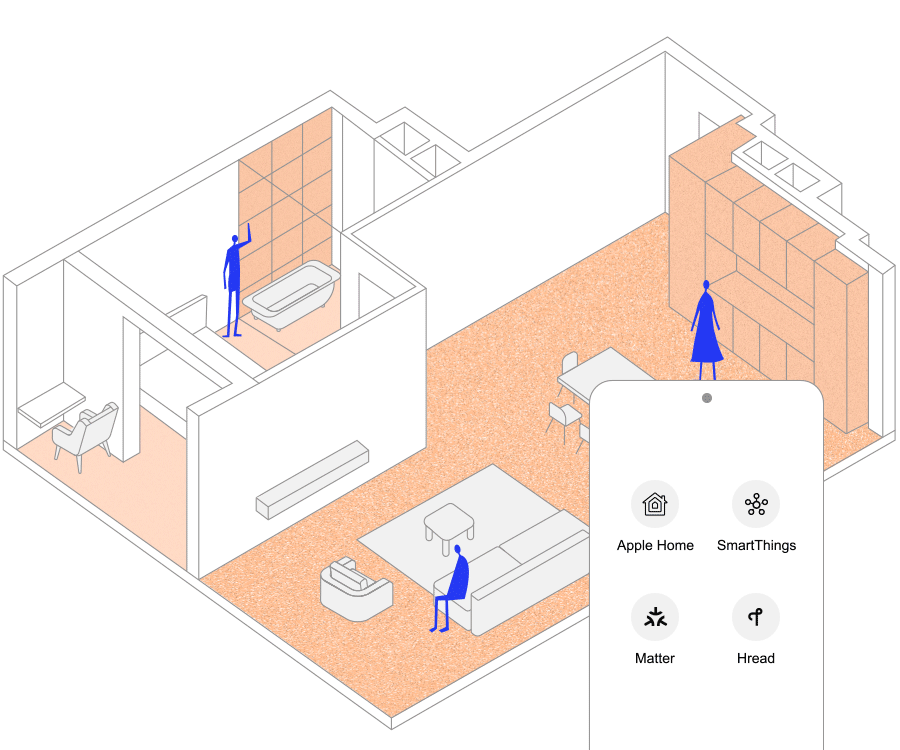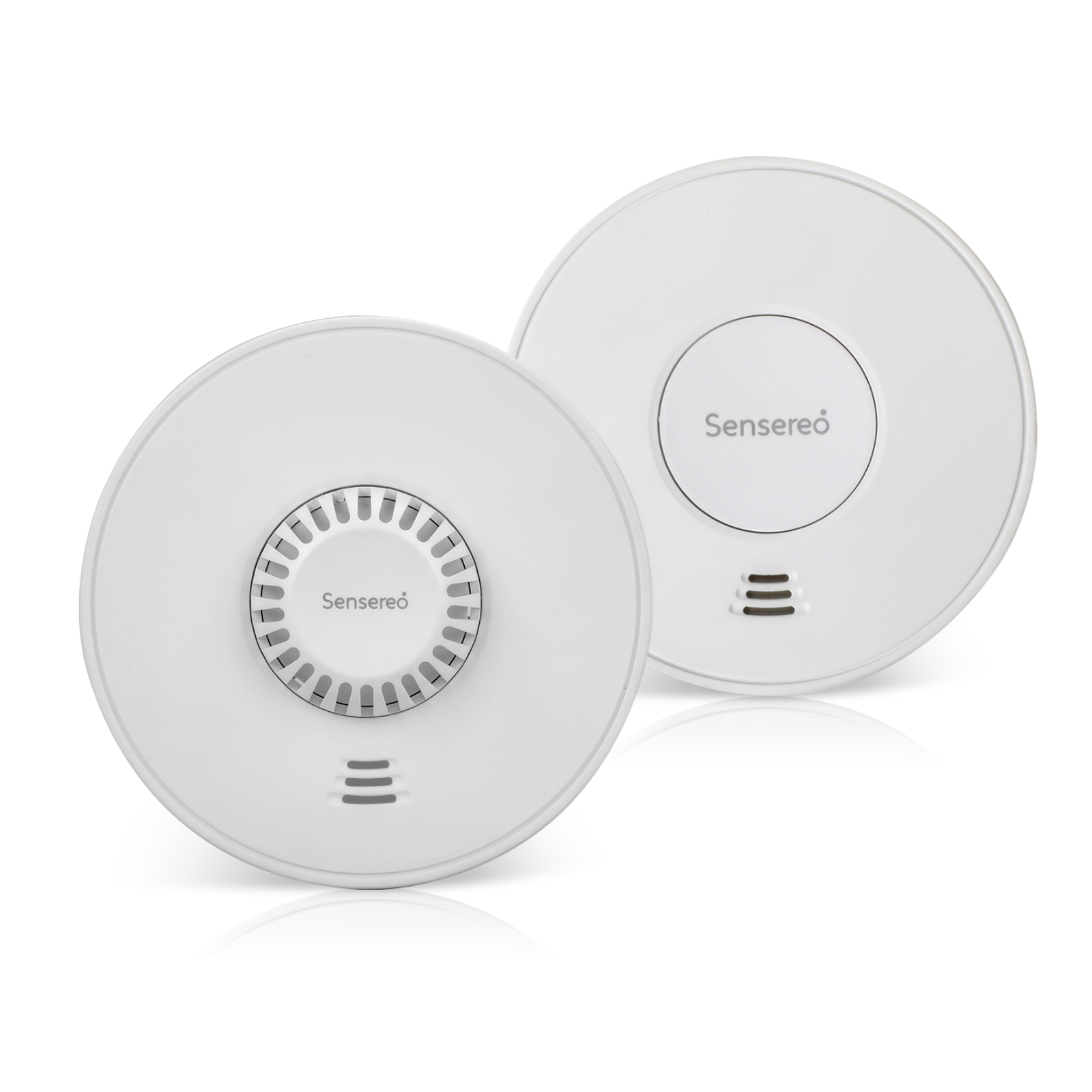Why I’ll Always Choose Separate Smoke and CO Alarms for My Home’s Safety
Making sure your home has both smoke and carbon monoxide (CO) detectors is a no-brainer for safety, but did you know that most fire safety experts actually recommend installing them as separate units? I want to dive into the critical reasons behind this advice, looking at what makes advanced smart smoke detectors tick and why picking the best carbon monoxide detector for your specific space is so important. We’ll also touch on how new tech like Matter over Thread is completely changing the game for these essential tools, giving you some practical tips to keep your home as secure as possible.

Understanding the Unique Dangers: Smoke vs. CO
To get home safety right, the first thing we need to do is really understand the different enemies we’re up against: smoke and carbon monoxide. Though it sounds basic, they are two totally different threats, which is why we need different ways to detect them. Let’s break down the science just a bit:
Smoke:
- A fast-moving, visible threat with destructive power.
- Announced by smoke, flames, and intense heat.
- Smoke alarms detect tiny particles from burning materials, giving you precious time to react and escape safely.
- Use ionization or photoelectric sensors, each better at detecting different types of fires.
Carbon Monoxide (CO):
- Invisible, odorless, and highly toxic — often called the “silent killer.”
- Can leak from fuel-burning appliances like furnaces, water heaters, and fireplaces.
- Impossible to detect by sight or smell, making dedicated CO alarms essential.
- Use electrochemical sensors designed specifically to detect CO gas.
These fundamentally different detection methods highlight why having tailored alarms for each threat is crucial to ensure true home safety.
Lifespan Discrepancies: Why Separate Alarms Last Longer
For me, one of the most convincing arguments for having separate smoke and CO alarms comes down to their lifespans. It might seem like a small detail, but when you look at how often each needs to be replaced, you realize that combination units can lead to either replacing things too early or, even worse, being left unprotected.
Most of the smoke alarms you’ll find on the market are built to last about 10 years. After a decade, their ability to sense smoke starts to weaken, making them less reliable. It’s super important to swap them out on schedule to make sure they’ll be there for you if a fire ever breaks out.
By contrast, carbon monoxide detectors have a shorter working life, usually somewhere between 5 and 7 years. The electrochemical sensor inside a CO detector just wears out faster than the sensors in a smoke alarm, which means its ability to accurately detect dangerous CO levels goes down.
So, you can probably see the problem this creates for those all-in-one combo units. If you have a combined alarm and its CO sensor hits its expiration date after, say, six years, you have to replace the entire device. That means you’re tossing out a perfectly good smoke alarm component, which just feels wasteful and adds up in cost over time. When you install separate smoke and CO alarms, you just replace each one when it’s actually needed, which honestly makes more financial sens
Optimal Placement: Why Location Matters for Each Alarm Type
You can have the best alarms in the world, but if they aren’t in the right spot, their effectiveness drops dramatically. This is where we see a real conflict in trying to make a combo unit work, because the ideal locations for smoke and CO alarms are often quite different.
- The Best Location for Smoke Detectors
When I’m placing smoke alarms, my go-to rule is to put them on the ceiling or high up on a wall, usually within 6 inches of the ceiling. It’s simple physics: smoke rises, so putting detectors up high gives you the earliest possible warning. You really should have them on every level of your home, and both inside and outside of sleeping areas. For fire alarm installation, I always try to avoid putting them too close to kitchens or bathrooms. This little tip helps prevent those annoying false alarms you get from cooking smoke or shower steam. In fact, a good rule of thumb from the National Fire Protection Association (NFPA 72) is to keep them at least 10 feet away from cooking appliances.
- Ideal Carbon Monoxide Detector Height
Now, for the carbon monoxide detector height, the advice is quite different. While CO does mix pretty well with the air, I’ve found that placing CO detectors at about chest height, or even knee height, gives them the best shot at detecting CO as it spreads through a room. You’ll also want to place them near potential sources like your furnace or water heater, as well as outside bedrooms.
This difference in placement really highlights the challenge with combo units. A combo alarm mounted on the ceiling is great for smoke, but it might be less effective at catching CO that could be gathering at lower levels. And if you place it lower for the CO, it might miss the first signs of a fire spreading across the ceiling. With separate smoke and CO alarms, you can put each detector exactly where it needs to be to do its job best.

The Rise of Smart Alarms: Advantages of Dedicated Smart Smoke Detectors and CO Detectors
The smart home revolution has been amazing, and it’s brought some incredible features to our safety devices. I’ve been really impressed by what I’ve seen with smart smoke detectors and specialized CO detectors, and it’s another area where dedicated units really shine with more tailored features and better integration.
Smart alarms are so much more than a simple beep. We’re talking about getting notifications on your phone, being able to check on your home remotely, and having interconnected systems where all the alarms talk to each other. They can even give you clear voice alerts telling you what and where the danger is. That means you’ll know about a problem no matter where you are, which gives me incredible peace of mind.
A dedicated smart smoke detector can tell you the exact location of a fire, let you silence nuisance alarms from your phone with a hush mode, and even work with your smart lights to show you an escape route. They offer a really sophisticated approach to fire alarm installation and complete fire safety.
Similarly, a dedicated smart carbon monoxide detector can track historical CO levels, which is great for spotting trends or small, intermittent leaks. They can warn you about even low levels of CO that can cause long-term health problems and can even be programmed to turn on smart fans to ventilate the house. For the best carbon monoxide detector, these smart features are a game-changer for safety.
And for those of us who are really into our smart homes, there’s something pretty exciting on the horizon: Matter over Thread devices. These new standards are all about making it easy for smart devices from different brands to work together seamlessly. This means you can mix and match the best smart smoke detector and CO detector to build a flexible system that grows with your needs, without being locked into one brand.

Installation Best Practices and Maintenance Tips for Separate Alarms
Of course, any alarm system is only as good as its installation and maintenance. I want to walk you through a practical guide for getting your separate smoke and CO alarms set up and cared for, which really reinforces why having distinct units is so practical.
- How to Install Smoke Alarms
When you’re tackling your fire alarm installation, just remember to put a smoke detector on every level of your home, including the basement, and both inside and outside any sleeping areas. I always mount them high on the wall (within 4-12 inches of the ceiling) or right on the ceiling. As I mentioned, keep them away from kitchens and bathrooms to cut down on those frustrating false alarms. Proper smoke alarm placement is half the battle. If you can, I always recommend hardwired units with a battery backup, especially if you want them interconnected so they all go off at once.
- How to Install Carbon Monoxide Alarms
For the carbon monoxide detector height, I stick to placing them around chest height or a bit lower, but definitely somewhere you can hear them from your bedroom. It’s crucial to put them near potential CO sources like your furnace, water heater, and gas dryer, but keep them at least 15 feet away from those fuel-burning appliances to avoid false readings when they first kick on. The CPSC suggests putting a CO alarm on each level of your home and outside sleeping areas, which is advice I strongly agree with.
- My Monthly Maintenance Checklist
- Test monthly: I make it a habit to press the test button on both my smoke and CO alarms every month. It only takes a second and confirms they’re working.
- Replace batteries: A good rule of thumb is to replace the batteries once a yearor right away if you hear that “low battery”
- Clean regularly: I give my alarms a quick wipe-down or a gentle pass with the vacuum brush every so often to keep dust from messing with the sensors.
If you’re looking for some reliable and easy-to-install options that follow all these safety guidelines, you can check out the range of separate smoke and CO alarms over at Sensereo.com.
Making the Smart Choice for Your Home’s Safety
So, to wrap it all up, I truly believe that installing separate smoke and CO alarms gives you and your family superior protection. When you consider their different lifespans, the very specific placement each one needs, and the overall reliability of dedicated units, the case for keeping them separate is pretty strong. By choosing separate devices, you’re protecting your home from having a single point of failure and making your life easier when it comes to maintenance.
For some high-quality, reliable smoke and CO detection solutions that stick to these best practices, feel free to visit Sensereo today and make that smart choice for your home!
Frequently Asked Questions (FAQ)
Q1: How much more does it cost to buy and maintain separate units?
A1: Price Range (each for one): $30–$60 (basic), $100–$130 (smart models). The initial cost might be a little bit higher, but honestly, I’ve found it can be more cost-effective in the long run. You only replace each unit when its specific sensor expires, instead of having to throw out a whole combo unit just because one part of it is done.
Q2: Are there any situations where a combination alarm is acceptable?
A2: Of course. Combination alarms are designed to meet basic safety regulations, and they can be a decent option for smaller homes or apartments where the best placement for both alarms might actually overlap. But for the absolute best protection, fire safety experts like the folks at the NFPA generally recommend going with separate units.
Reference:




